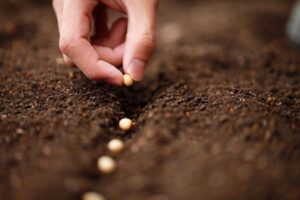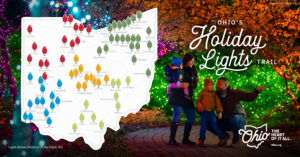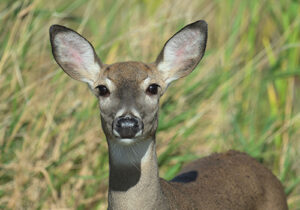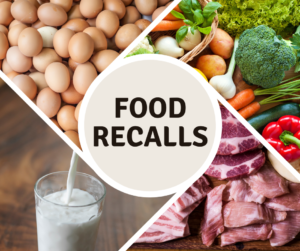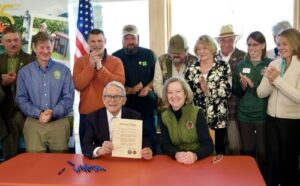Homestead Corner: Our Homesteading Journey

Homestead Corner is a weekly feature that will hopefully help inspire you along the way on your
own homesteading journey, or help you gain the confidence and skills to start out.
Introductions
For this first edition instead of focusing on a specific topic I thought it best to introduce myself,
and do an overview of my own homesteading journey so far. So this edition may get a bit long,
but hang in with me and I promise to be short and sweet moving forward! I’m Cat and this is the
first year I’ve really devoted time to homesteading for myself. I’ve been interested for years now,
doing research and a few small projects here and there in the past, but this year I decided it’s
now or never.
So why the interest in homesteading? Merriam-Webster defines a homesteader as “someone
who lives frugally or self-sufficiently (as on a homestead) especially by growing and preserving
food”. That self-sufficiency is the key reason I feel homesteading is so important. Especially
since the COVID-19 pandemic more people have been interested. For years now I have been
concerned about where my food comes from and what goes into it, the supply chain issues of
the pandemic and the changes we have seen since are a real driving force for me. It’s important
to me that I know what my family and I are eating, and that we have enough if something else
like this happens in the future.
Food Preservation
One of the best things I have learned on this journey is water bath canning. If you have a big
stock pot and some jars, you’re ready to start canning. I kept myself from canning for so long
because I believed you had to have a bunch of equipment and knowledge before starting. A
good canning cookbook, and advice here and there from a friendly canning group on Facebook
was really all I needed to get going.
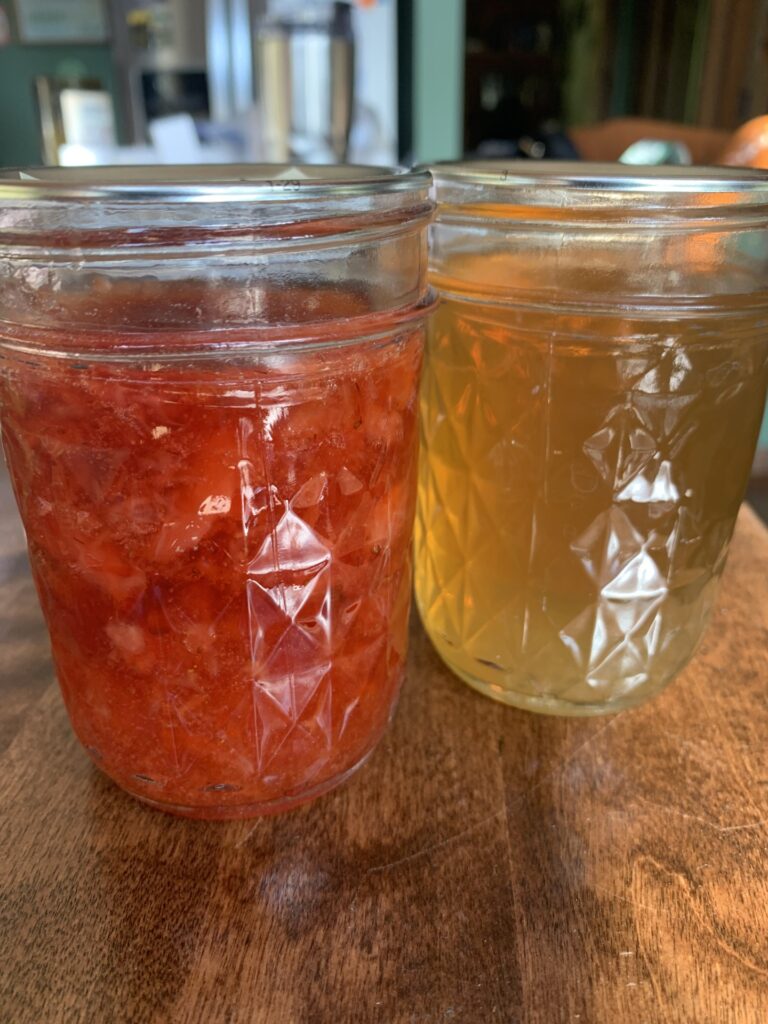
I would say once I started, my biggest challenge was learning you can’t alter canning recipes. I
really love baking and never bake anything exactly as the recipe shows, I always put my own spin on it and I quickly realized that’s not something you can do with canning. My advice there is stick with the tried and true recipes handed down, or else you’ll end up throwing out a whole batch of spoiled preserves like I had to. Also keep in mind, you don’t have to only can your own homegrown food. If the grocery store has a really good deal on berries that week, it’s a great way to stock up to make jams, pie fillings, juices and more you can enjoy throughout the year.
Along these lines, I also found out about a vacuum sealer for mason jars and it has been
amazing! They are affordable and can help you long term store any dried good, such as rice or
beans. I also purchased a small food dehydrator and was able to vacuum seal some fruit for
later use! This is a great way to take a small step into the world of food preservation because it’s
so simple.
Food Cultivation
Like most people in Southeastern Ohio, I have a lot of deer around me. This can make food
cultivation a bit difficult and sometimes disheartening if you put a lot of work in only to see it
never come to fruit because something else got to it before you. It was a bit of trial and error, but
I learned to try to not work against the local wildlife as much as possible, and try not to interfere
with their normal habits. The best way I found to do this was to do container gardening as much
as possible. This allowed me to cultivate berries, peppers, herbs, and vegetables right on my
porch where I didn’t have to worry about little critters. I still planted some things that needed
more space in the yard, and will continue to expand there in the coming years, but for starting
out you can get so much more than you expect out of container gardening.
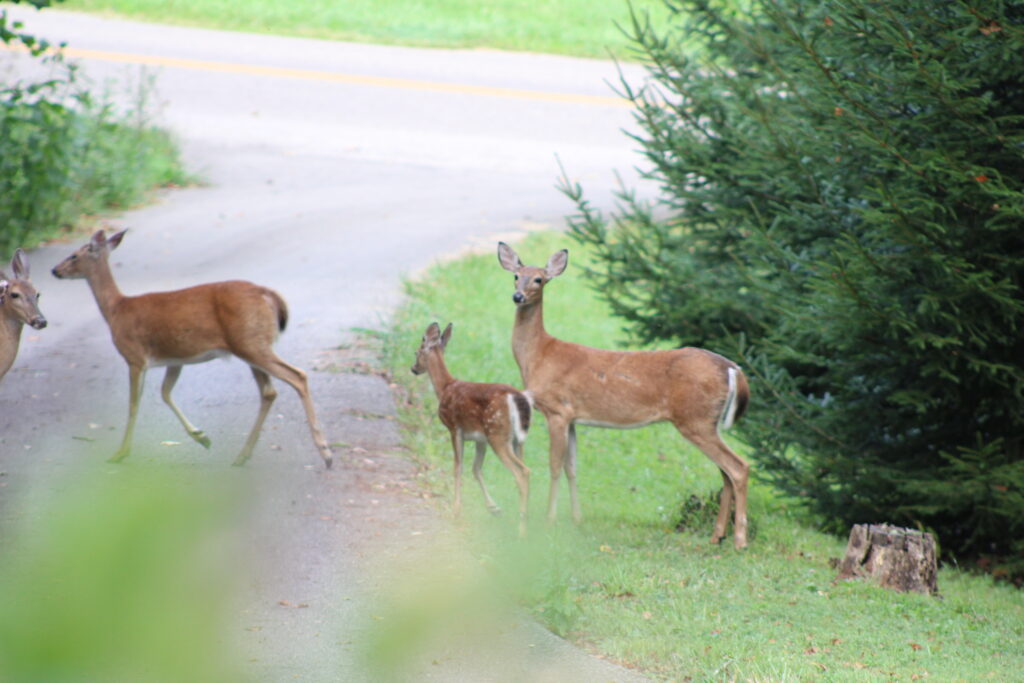
In my containers I had multiple types of berries this year. Sometimes berries will have just one
ripe fruit a day, and maybe no more for a couple of days. While successfully growing your own
strawberry is exciting, it doesn’t exactly go very far. The best solution for this I found was to pick
each fruit at its most ripe and immediately freeze them. I gathered them until the end of their
fruiting season and then had plenty to work with to make a full batch of jam, pie filling, or
whatever else I wanted.
Another favorite of my porch cultivation was growing herbs. I found having fresh herbs right out
my front door really encouraged me to cook with them more often. It made it so easy to step out
and trim exactly what I needed. Some herbs also thrive with regular trimming, and it encourages
them to bush out more if done correctly, so using them on a regular basis meant I had even
more the next time I went to gather them. When they got to be a bit too big I would trim them
back to bring inside and hang dry the herbs to store for later use for when fresh herbs aren’t
available. It’s a great cycle that means I’m using my own home grown herbs all year long.
Pollinators
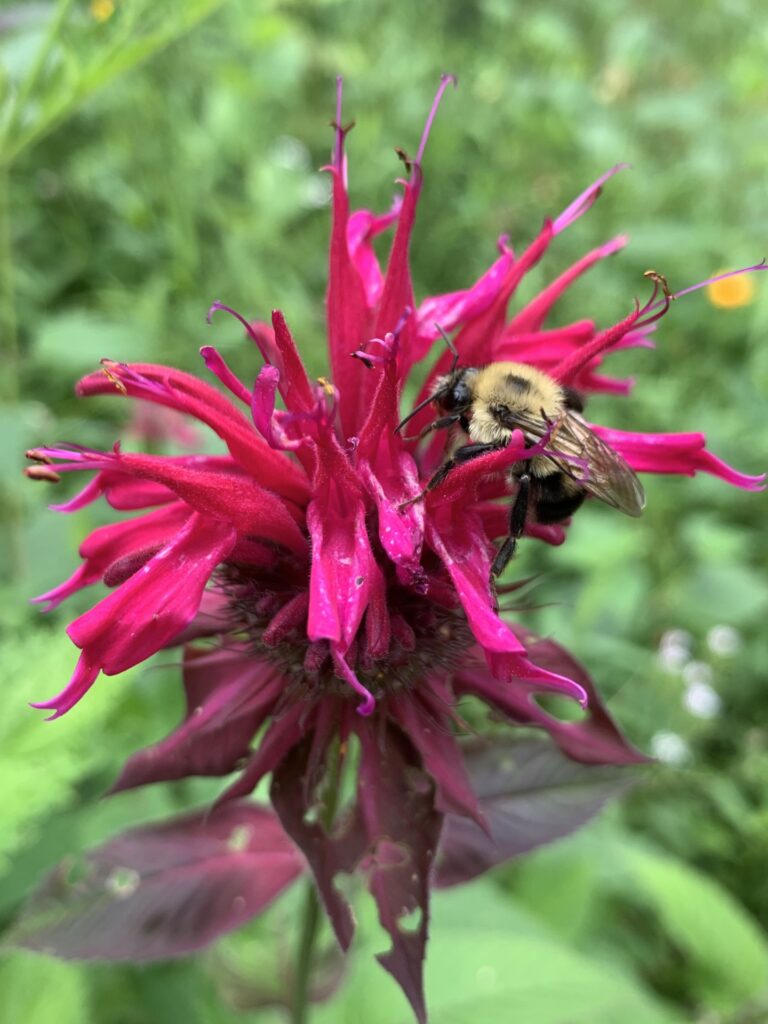
Anyone that knows me knows I’m always excited to talk about all of our great pollinator friends.
From bees and butterflies, to hummingbirds and even bats, I’m thankful for every local
pollinator. When preparing my growing space at the beginning of the season I was mindful to
not clear out my growing beds until pollinators had come out of hibernation. Once they do you
have to ensure a food source for them so they can help your harvest thrive throughout the
growing season. In our area dandelions are typically their first food of the season, it is so
important to leave them and not mow them down or spray them with anything that could harm the pollinators. To keep them going all year long it’s a great idea to dedicate a part of your yard to being a pollinator bed. It’s always best to plant locally native flowers, and I wouldn’t suggest getting a mixed pollinator seed packet. A lot of times they have flowers that aren’t native and don’t help your local pollinator population like you intended. I also have a no pesticide policy on my own property to make sure nothing harmful could get in my own food, or the pollinator’s.
Foraging
Foraging truly is an underused method of sustainability. Learning what was already growing
around my house has been so helpful for me and has really turned into a bounty of its own.
Always use caution when foraging, it’s best to double check your plant identification using a
trusted book with pictures, and not just the internet to make sure it’s a safe plant to ingest.
These books will also help you know how much is safe to harvest from the plant to ensure it
keeps coming back for future use. This also inspired me to get an herbalist certification so I
could best use the wild herbs and plants available to me. This isn’t necessary, but if you’re
especially passionate about foraging it’s a great way to help build your skills there.
In conclusion
If you made it this far, thank you so much! Everything discussed here and more will at some
point be focused on and I’ll give more in depth information you can use yourself. These were the
main topics that really inspired me this year and got me going on this journey, so I felt it was
most important to share first. I hope you enjoy seeing my trials and successes each week, and
that you can gain something helpful for yourself out of this whole experience for me.
I’m always happy to focus on topic suggestions, or your homesteading related questions! If
there’s something you’d like to see or have me answer in the next edition please email me at
[email protected]
See you here next week!





